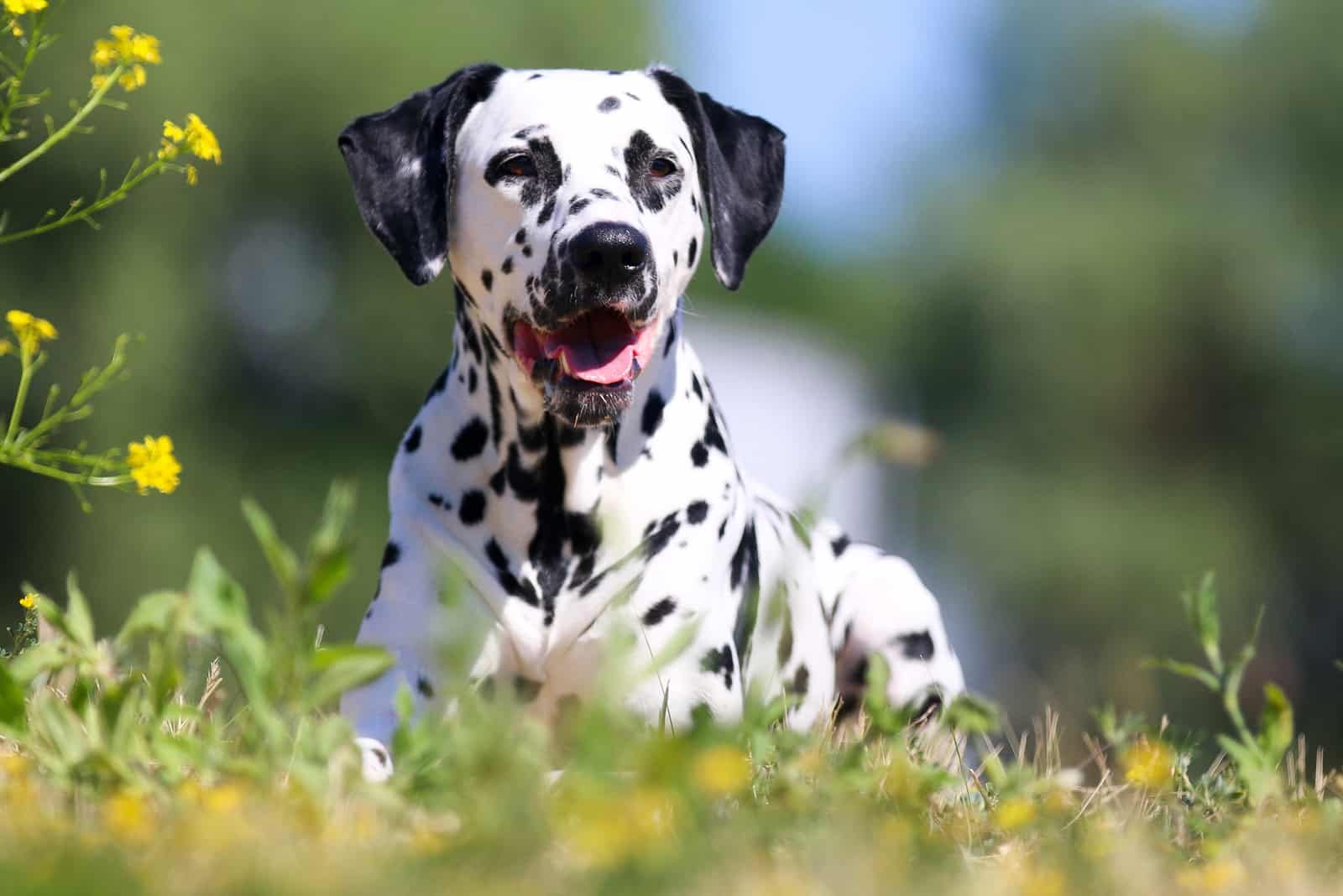No matter your age, you have most likely at least heard about Disney’s 101 Dalmatians. This movie is the main culprit behind the breed’s popularity in the late 1900s.
Dalmatians are considered one of the easiest dogs to identify, and the reason behind this is their unique appearance. Everyone knows that Dalmatians have black spots on a white base coat! In fact, not many people even think about different Dalmatian colors. Everyone knows that these are black and white dogs! Or, are they?
Believe it or not, most kennel clubs accept several Dalmatian colors, and black and white is just one of the few variants.
If this is something that interests you, you’re in the right spot. We’ll explain all that interests you about Dalmatian colors, coat types, and how to take care of your pooch’s fur. Let’s begin!
About Dalmatians
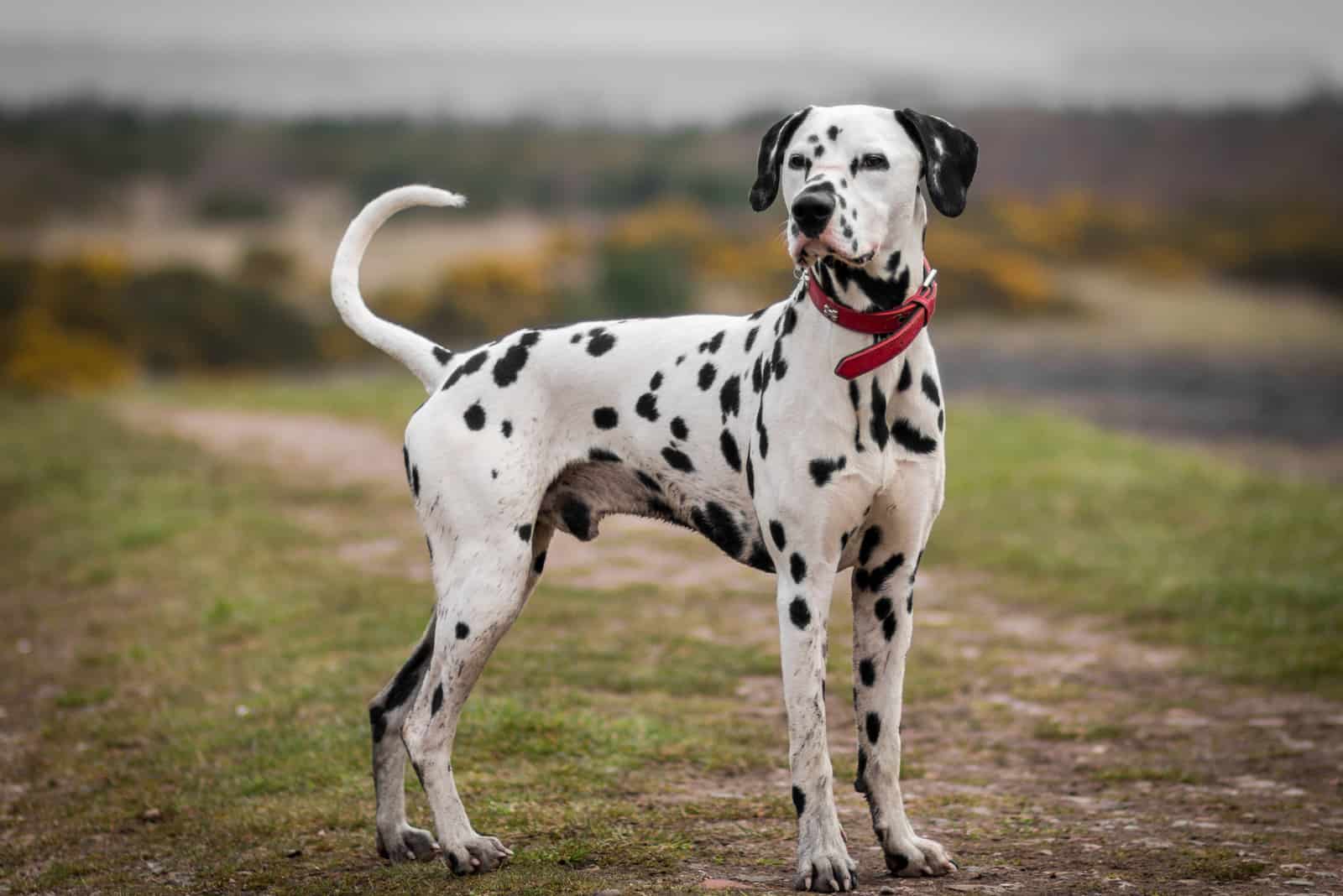
While everyone knows how Dalmatians look, not many know the interesting history of this spotted breed. Dalmatians aren’t only known for their coat that the Disney villain, Cruella de Vil, desires. For years, they had some of the most unique jobs in the dog world.
Dalmatians started off as coach dogs. They kept company to the horse-drawn rigs driven by nobles, firefighters, and gypsies. In fact, these black-spotted dogs were used as firehouse dogs for decades.
This is why, in many areas, the Dalmatian dog is the mascot found on firefighter trucks and stations, and sometimes even on fire engines.
The breed got its name from the Dalmatia region located in Croatia – although it isn’t very clear why since there is no proof that this is where the breed originates from.
The breed became a popular family dog after 101 Dalmatians aired in 1961. They were more desirable than some other well-known breeds, such as Labrador Retrievers or even Poodles. Everyone wanted to become a Dalmatian owner!
Unfortunately, this sudden influx of popularity proved to be a bad thing for the breed as once people learned that Dals can be tricky to take care of, many Dalmatians ended up on the street.
Dalmatians are protective and loyal. They can be wary of strangers, but are effortless to train, making them some of the finest watchdogs.
How Much Do Dalmatian Puppies Cost?
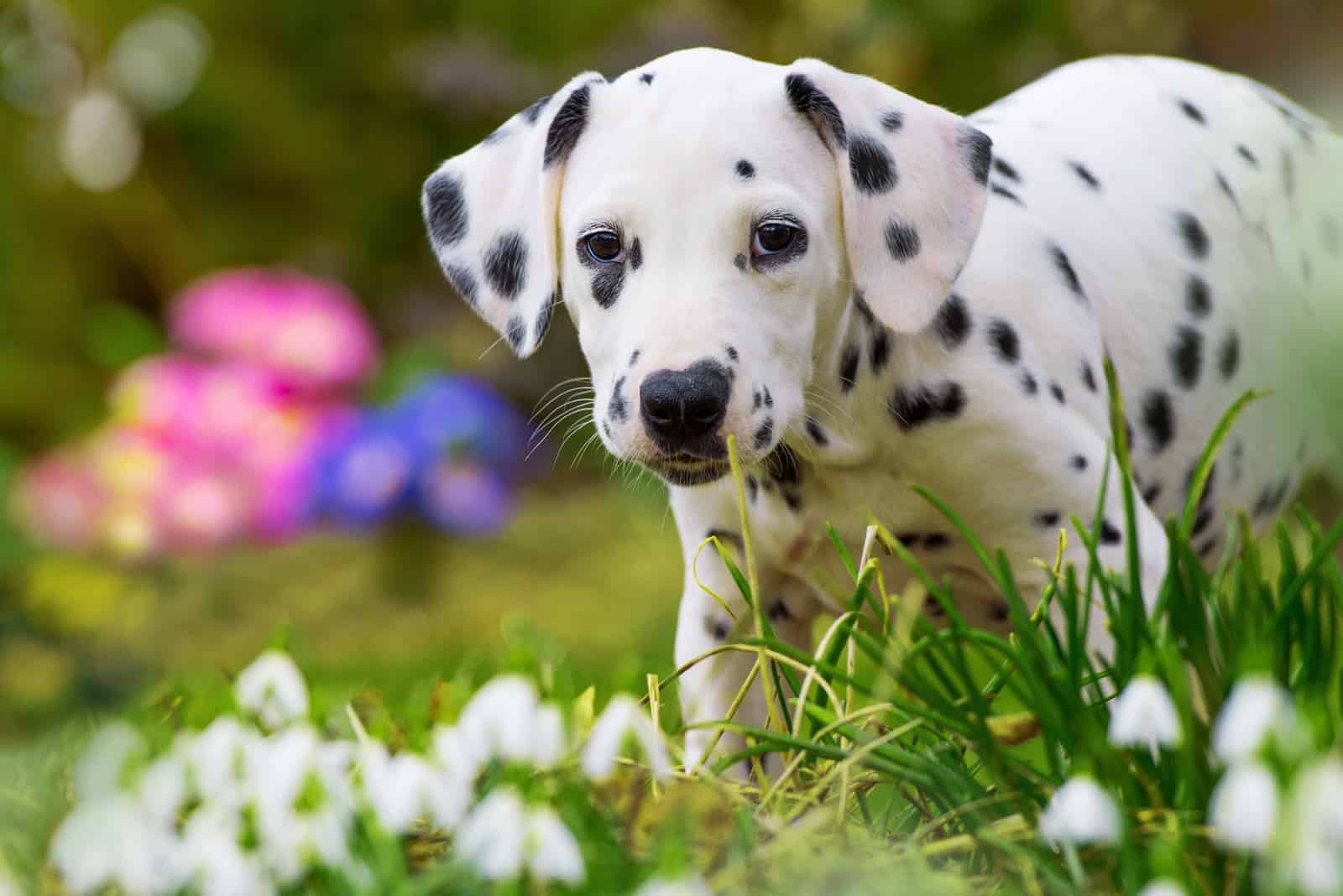
Today, while still easy to recognize, Dalmatians have lost a bit of the popularity they had in the previous century. This also made their price drop, which is a good thing for aspiring dog owners.
The typical price for a purebred Dalmatian puppy is anywhere between $300 and $3,000. Most Dals can be bought for around $900. This is quite affordable compared to many other breeds.
Keep in mind that this is the price for Dalmatians meant to be kept as family pets. Show-quality dogs can cost much higher – some can cost $5,000 or even more!
There are several factors that influence the price of the Dalmatian, and these include:
• The breeder’s reputation
• Bloodline
• Local demand
• Dalmatian colors
Of course, you cannot be aware of the full cost of owning a Dalmatian until you’ve calculated things such as the cost of the dog food, supplies, and veterinarian bills. During the first year, this can cost you up to $1,500. However, in later years, this price is much smaller.
What Color Do Dalmatians Come In?
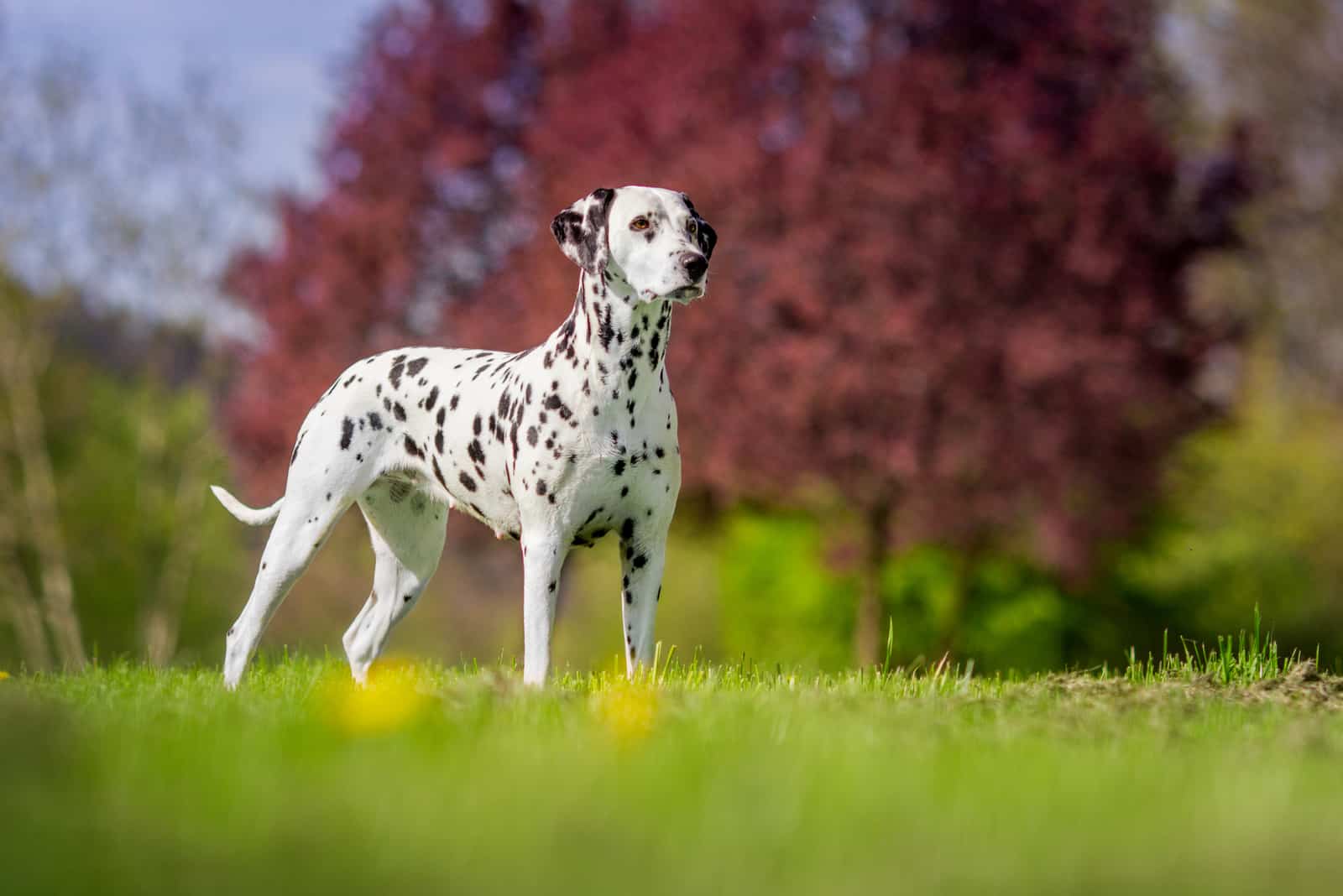
Most people think that there are no other Dalmatian colors than the standard black and white combination everyone knows. But, the truth is, these pups can come in several other color combinations, such as the unique white and lemon!
While white with black spots isn’t the only standard color, not all are accepted by kennel clubs. Some Dalmatian colors are even considered faulty because they can lead to certain health problems!
Of course, we’re not talking about Dalmatian crossbreeds, such as a Dalmatian Corgi mix. These dogs can come in plethora of other colors thanks to the expanded gene pool.
We’ll go over all the possibilities for Dalmatian coat colors, and we’ll even touch on genetics a bit. Stay tuned!
What Causes Dalmatian Spots?
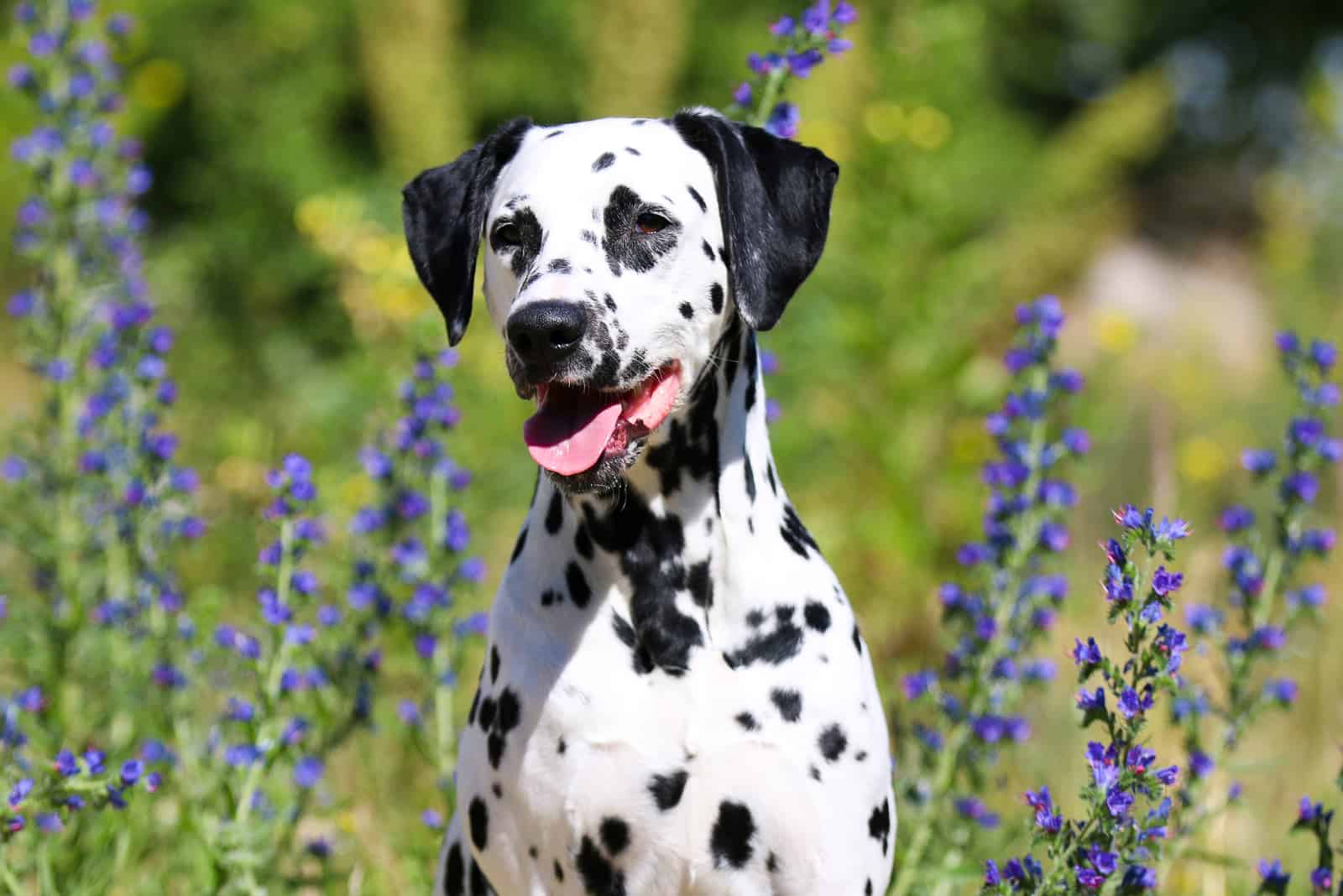
According to what we know, Dalmatians didn’t always have spots. However, selective breeding made this the standard for the breed – and no, this wasn’t done just for the appearance.
As Dalmatians were used as carriage dogs, they had to be visible in the crowds and stand out from the rest. Their spots enabled them to do just that. They were easy to spot and they would signal the arrival of aristocrats, so their unique pattern was considered a useful trait.
Just like any other trait, a dog’s coat color is determined by genetics. Through the years of the breed’s evolution, some mutation occurred and gave Dalmatians the spots they are known for.
It is believed that the breed was also mixed with spotted Great Danes and Pointers to achieve consistency with the unique coat pattern.
While the exact cause of the spots isn’t known, it is believed that the TYRP1 (brown) locus that is found on chromosome 11 is connected with the appearance of the colored spots on the dog’s coat.
Related: Spotted Dog Breeds: 30 Dogs With Remarkable Spots
Can Dalmatians Come With No Spots?
While this might seem unbelievable, Dalmatian puppies are born without any visible spots. Their coats are snow white, and you might not even think that they belong to the Dalmatian breed!
However, spots are present on the puppy’s skin, underneath all that white coat, indicating what will happen in the future.
When puppies are around two weeks old, darker spots begin to appear on their fur, creating the coat they are famous for.
When it comes to adult dogs, Dalmatians cannot come without spots or with any other markings such as brindle, sable, or tuxedo. The only exception are dogs suffering from albinism, which come entirely in white.
Breed Standard For The Spots
The American Kennel Club (AKC) gives the official standard for the size and placement of the spots.
According to it, spots have to be well-defined and rounded; the size of half a dollar or a dime. They should be very distinct, and they cannot intermingle with one another.
While not mandatory, Dalmatians should have smaller spots on their head, legs, and tail, while the spots on their body can be larger. Also, some spots have to be present on their ears.
Dalmatian Coat Types
Most Dalmatians have a short, smooth coat. This is what the breed standard requires. However, it is possible to find long-haired Dalmatians as well.
We’ll explain how this rare occurrence happens.
Short-Haired Dalmatians
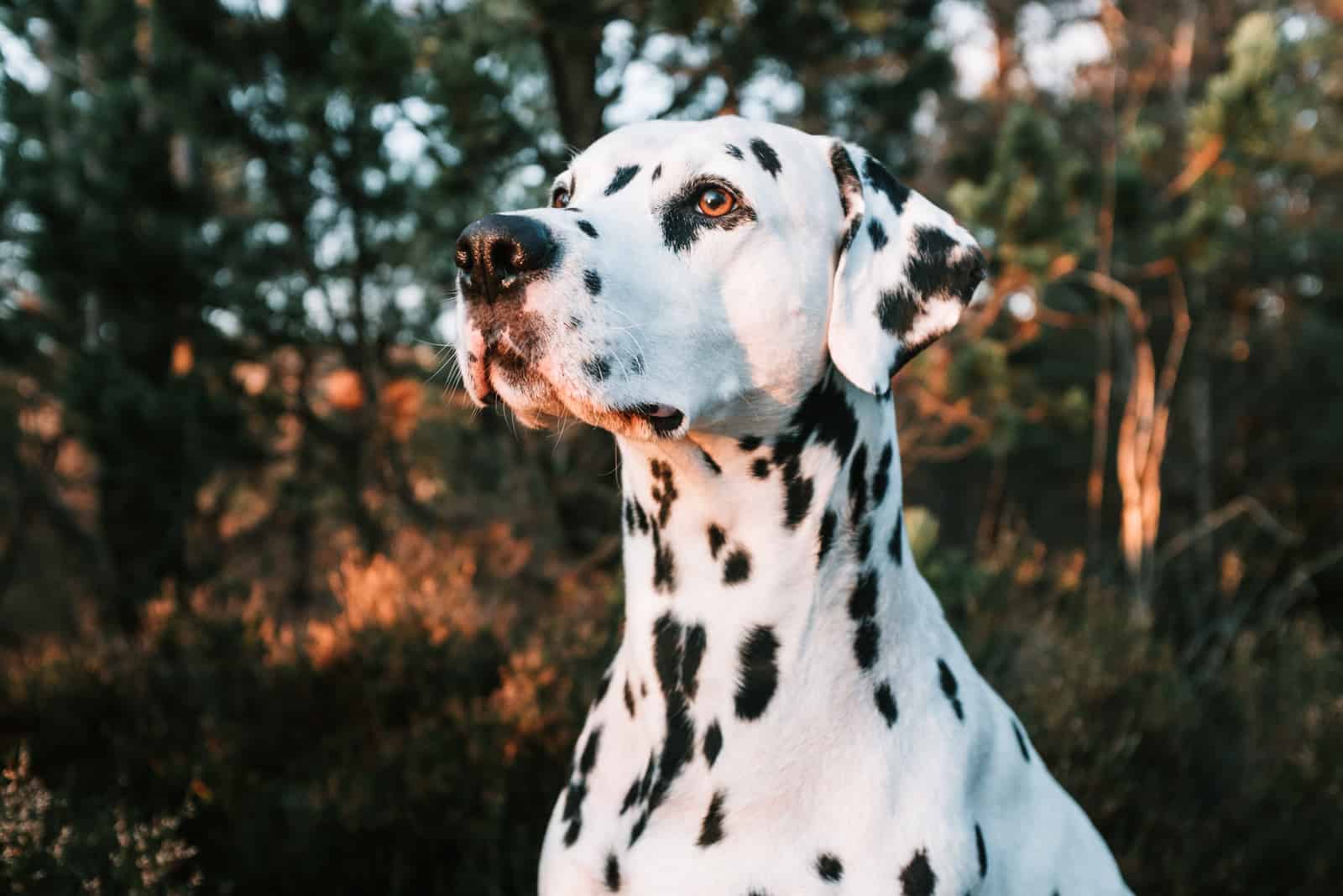
You’re all familiar with the short-coated Dalmatian. This is a part of the standard breed appearance.
A short-coated Dalmatian has smooth fur that is dense and close-fitting. It is glossy and sleek instead of woolly or silky. Both of the latter textures usually indicate that your Dalmatian is a crossbreed.
Long-Haired Dalmatian
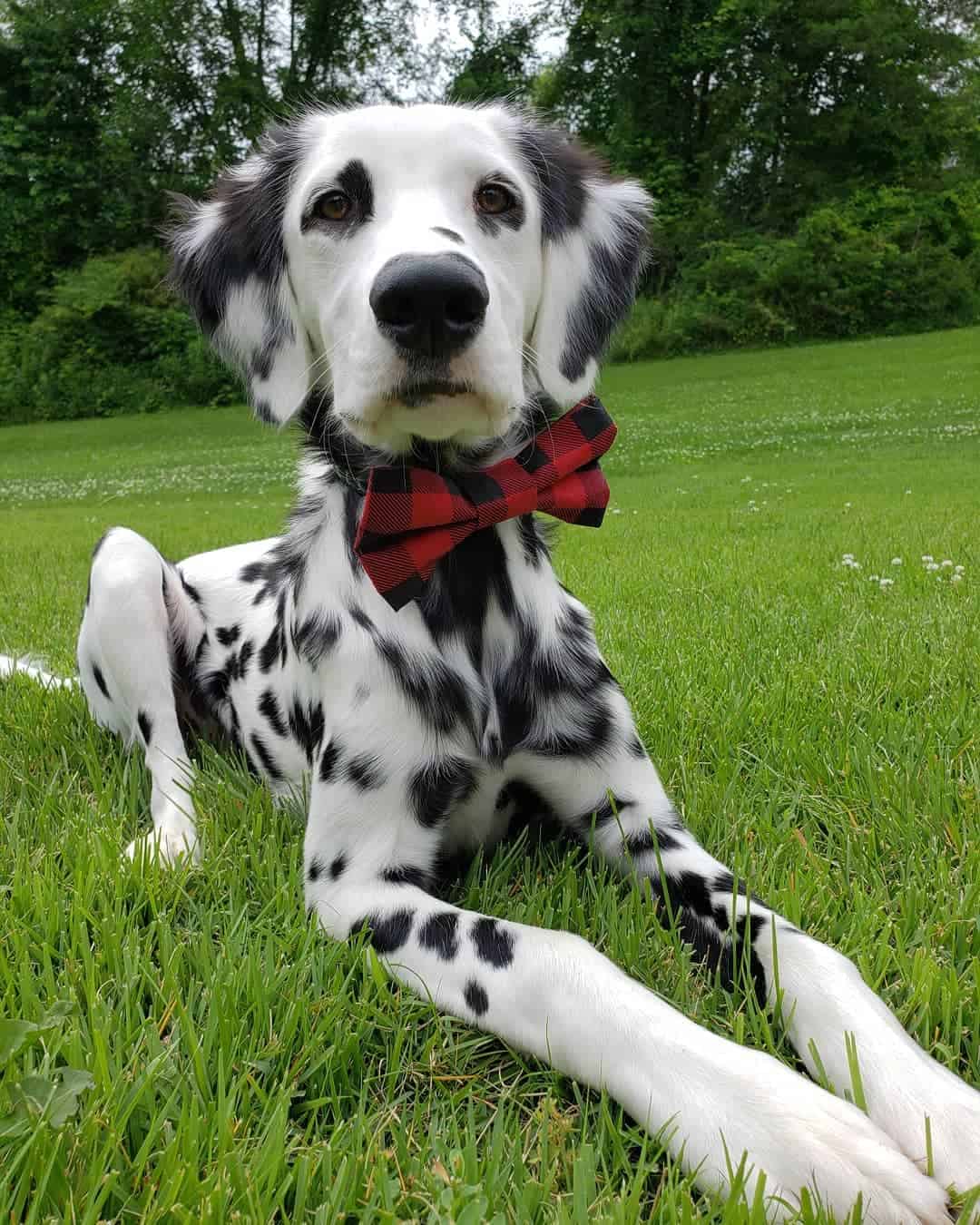
Photo from: @archibald_lotaspots
While a Dalmatian with long hair isn’t as common as its counterpart with short fur, it still exists – and yes, these dogs are purebred.
This longer coat is caused by a recessive gene, which means it can stay hidden for generations. This is why two short-haired Dalmatians can produce offspring with long hair.
For years, a long coat has been considered an undesirable trait in Dalmatians. Dal puppies with long fur were euthanized, which is one of the reasons why they are so rare. Even to this day, most conformation shows don’t accept long-haired Dalmatians.
Fortunately, these Dals became more popular in 2015, so there are some chances that the attitude toward them will change in the following years.
Dalmatian Spot Colors
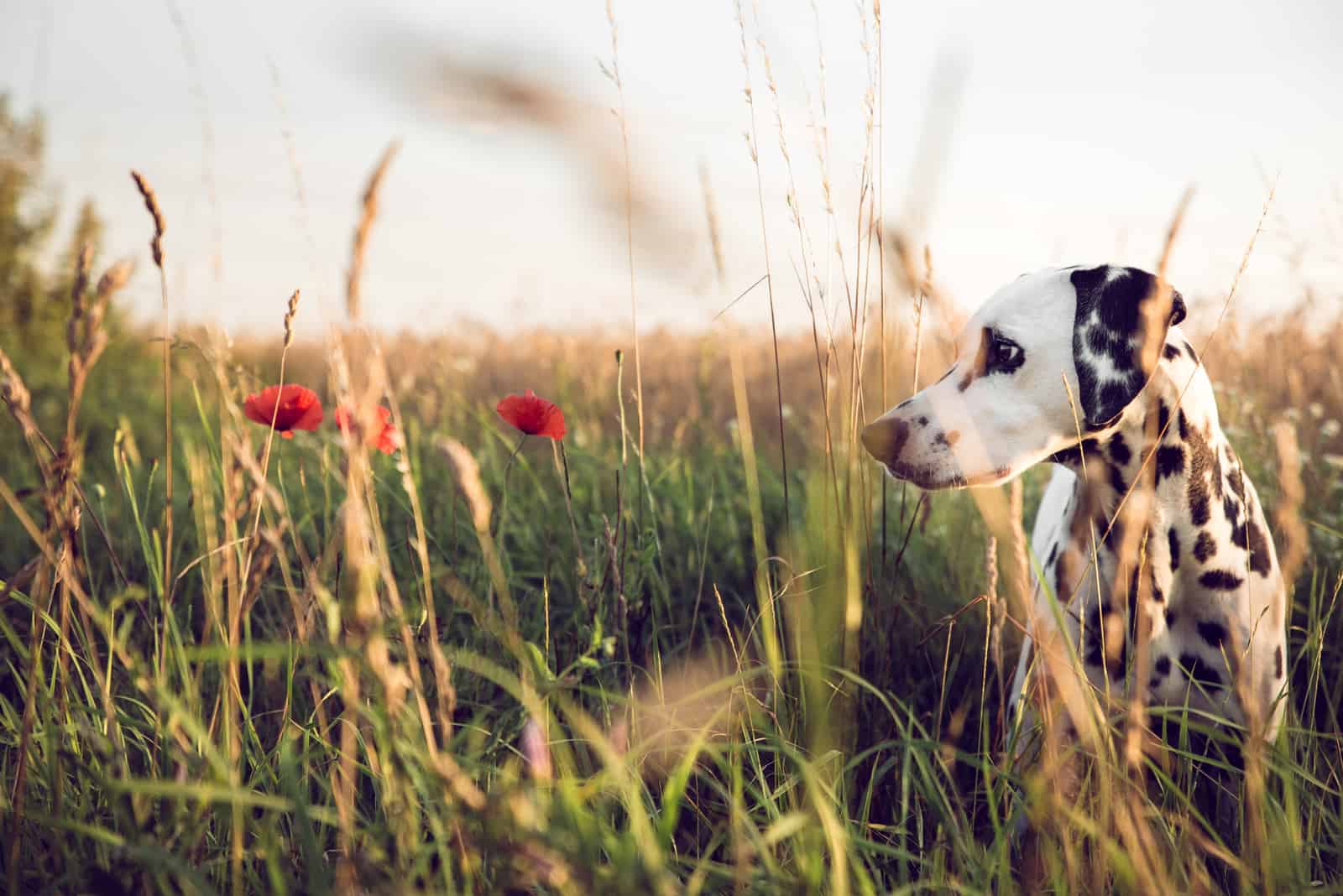
Acceptable colors for the breed are usually determined by kennel clubs. The purpose of kennel clubs isn’t just to arrange dog shows, but also to maintain the breed’s appearance.
The problem here is that different kennel clubs can have different breed standards. However, in the case of Dalmatian colors, the three biggest kennel clubs, the American Kennel Club (AKC), United Kennel Club (UKC), and Federation Cynologique Internationale (FCI) agree that the only two acceptable color combinations are white and black and white and liver.
Dalmatian Acceptable Colors
We’ll further talk about the breed standard determined by the AKC – although, as you’ve seen before, there isn’t hardly any difference when it comes to any other kennel club in the case of Dalmatian colors.
We’ll discuss all standard Dalmatian colors and try to help you visualize everything.
While the AKC recognizes a few more color combinations, only these two are allowed to participate in dog shows because they are the true breed standard.
White and Black Dalmatian
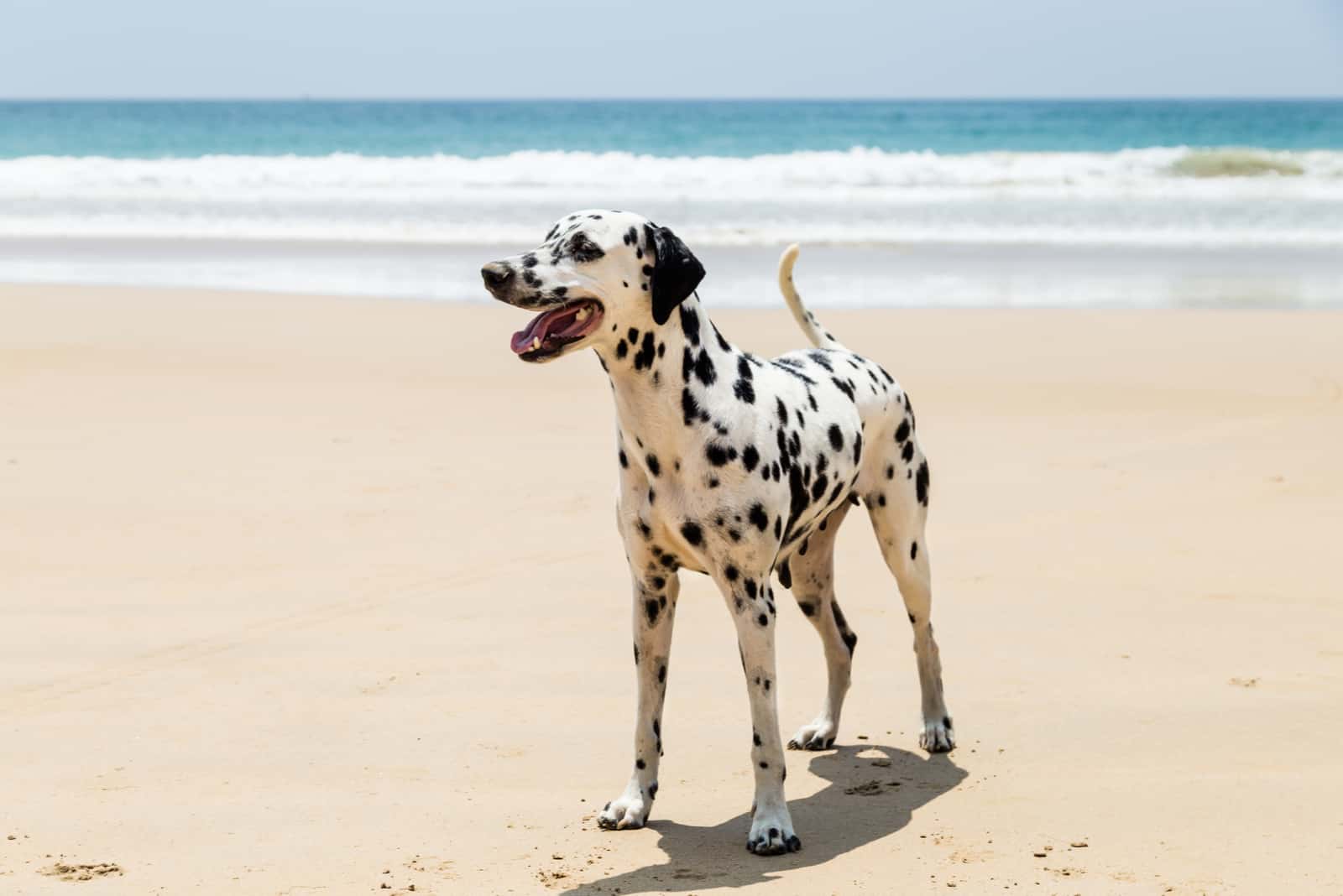
This is the typical Dalmatian that you imagine when you think of the breed. Nothing is more Dalmatian-like than black spots on a white base.
Just like that, white and black Dalmatians have a white base coat with dense black spots. These spots are well-defined and distributed evenly all across their body.
Due to some environmental conditions or bad nutrition, spots on some body areas might become lighter in color. However, this doesn’t mean that these dogs are suddenly tricolor.
All white and black Dalmatians will also have dark eyes, joined by a black nose, eye rims, and paw pads. Black is a dominant color, and such a dark pigment won’t tolerate any other color on the dog’s body – except, of course, for the white base.
White and Liver Dalmatian
White and liver Dalmatians have a white base with brown spots. Just like in Dalmatians with black spots, these dogs have rounded spots in various sizes that are distributed evenly.
The liver color is actually the result of a dilution gene being present in the dog’s DNA. This gene dilutes the black base and turns it into a liver brown.
However, it doesn’t affect only the dog’s coat. White and liver Dalmatians will always have a brown nose, eye rims, and paw pads, as well as lighter eyes that may even be amber or green.
Different Dalmatian Colors
The AKC recognizes a few more Dalmatian colors, although these aren’t according to the breed standard. This means that while you may be able to register your Dal, he won’t be able to participate in any dog show.
Many of these colors are the result of genetic manipulation. This means they aren’t that similar to a standard white and black or white and liver Dalmatian.
Here’s what these different colors are:
White and Lemon Dalmatian
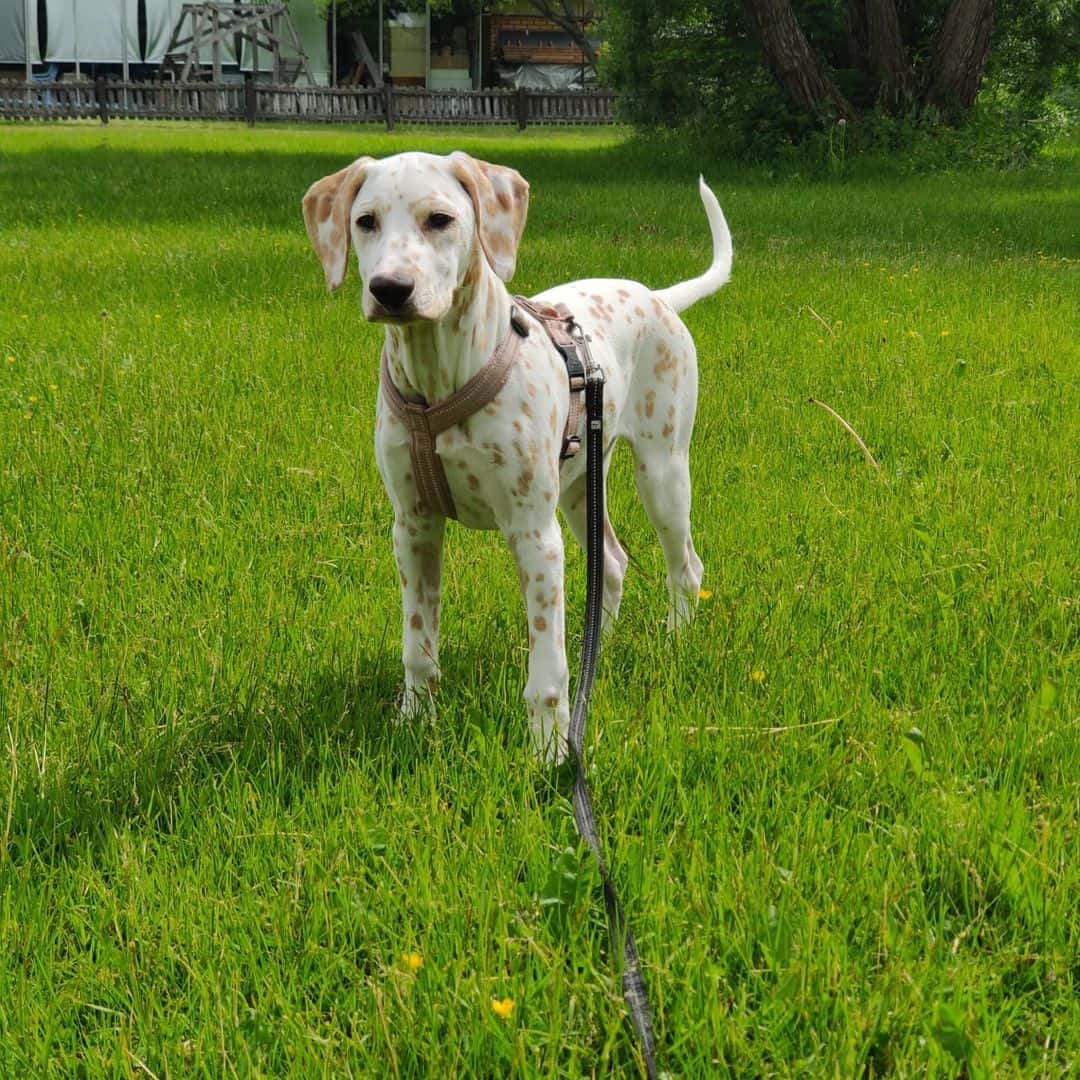
Photo from: @isla_lemondalmatian
Believe it or not, Dalmatians can come in a lemon color! While these dogs aren’t allowed in show rings, they will still make an amazing addition to your family because of their cute looks.
These Dalmatians have a white base and medium saturated yellow spots. These lemon spots might seem like they are artificially colored because of how bright they can be!
They may have brown or orange spots on their otherwise black noses, and their eyes will usually be brown colored.
White and Orange Dalmatian
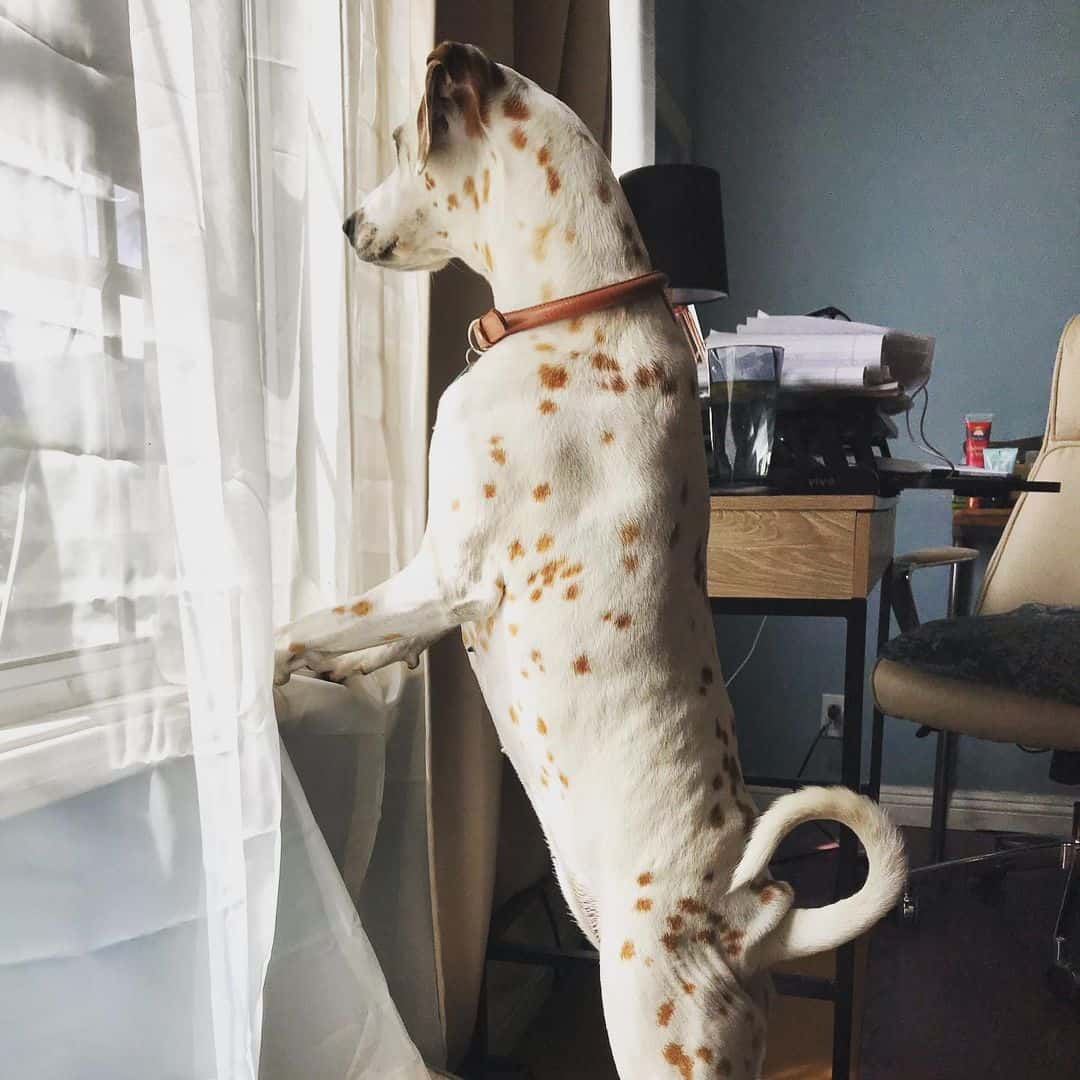
Photo from: @ambertheorangedalmatian
White and orange Dalmatians are similar to white and lemon ones, but with spots colored in a darker yellow shade.
Just like their lemon-colored counterparts, they aren’t allowed in dog shows, but you may register them with the AKC (but not within any other major kennel club).
Tricolor Dalmatian Colors
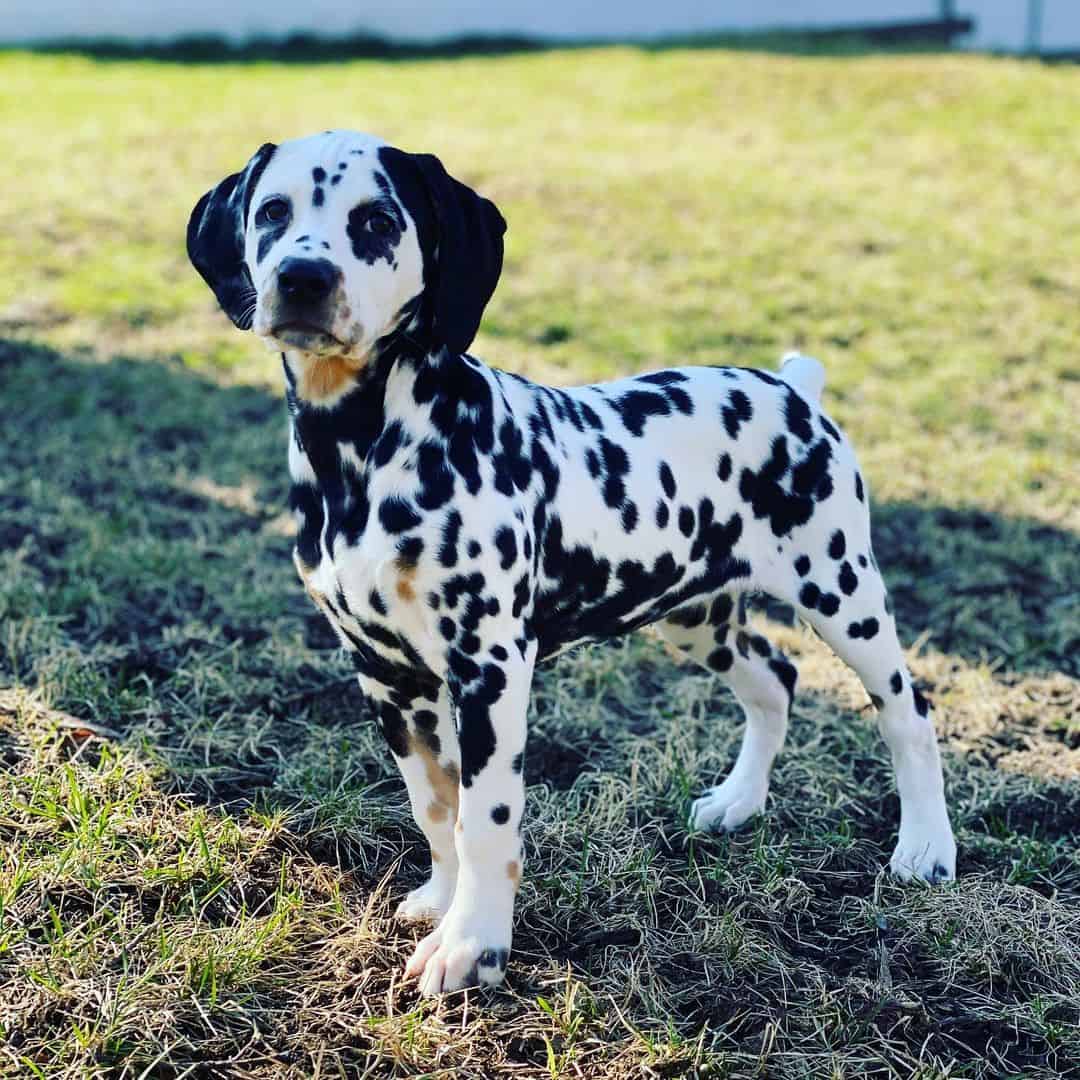
Photo from: @mels_dals
Other than white and lemon, and white and orange Dalmatians, the AKC recognizes two tricolor Dalmatian variants that aren’t recognized by other kennel clubs.
Here’s what they are:
White, Black, and Tan Dalmatian
These tricolor Dalmatians are similar to the white and black ones, but with tan points on their body.
If you don’t know what tan is, this is a dull reddish or ginger shade that isn’t as bright as orange nor as dark as a full red shade, but yet, it is still more colorful than brown or cream shades.
These dogs were purposefully bred to achieve this unique coat color as breeders wanted to add a unique twist to the standard Dalmatian pattern.
Most of the time, these tan markings (that may resemble spots, but not necessarily) will be located on the dog’s head, neck, chest, or tail.
White, Liver, and Tan Dalmatian
This is another tricolor combination that is quite unique. These dogs will have spots in liver and tan color.
However, unlike the black and tan one, these Dalmatians will usually have tan spots all over their body, with some liver-colored spots on their ears and face.
Unlike white and liver Dalmatians, these pups will have a black nose and dark eyes. This is because a different combination of genes is responsible for such a color combination.
Rare Dalmatian Colors
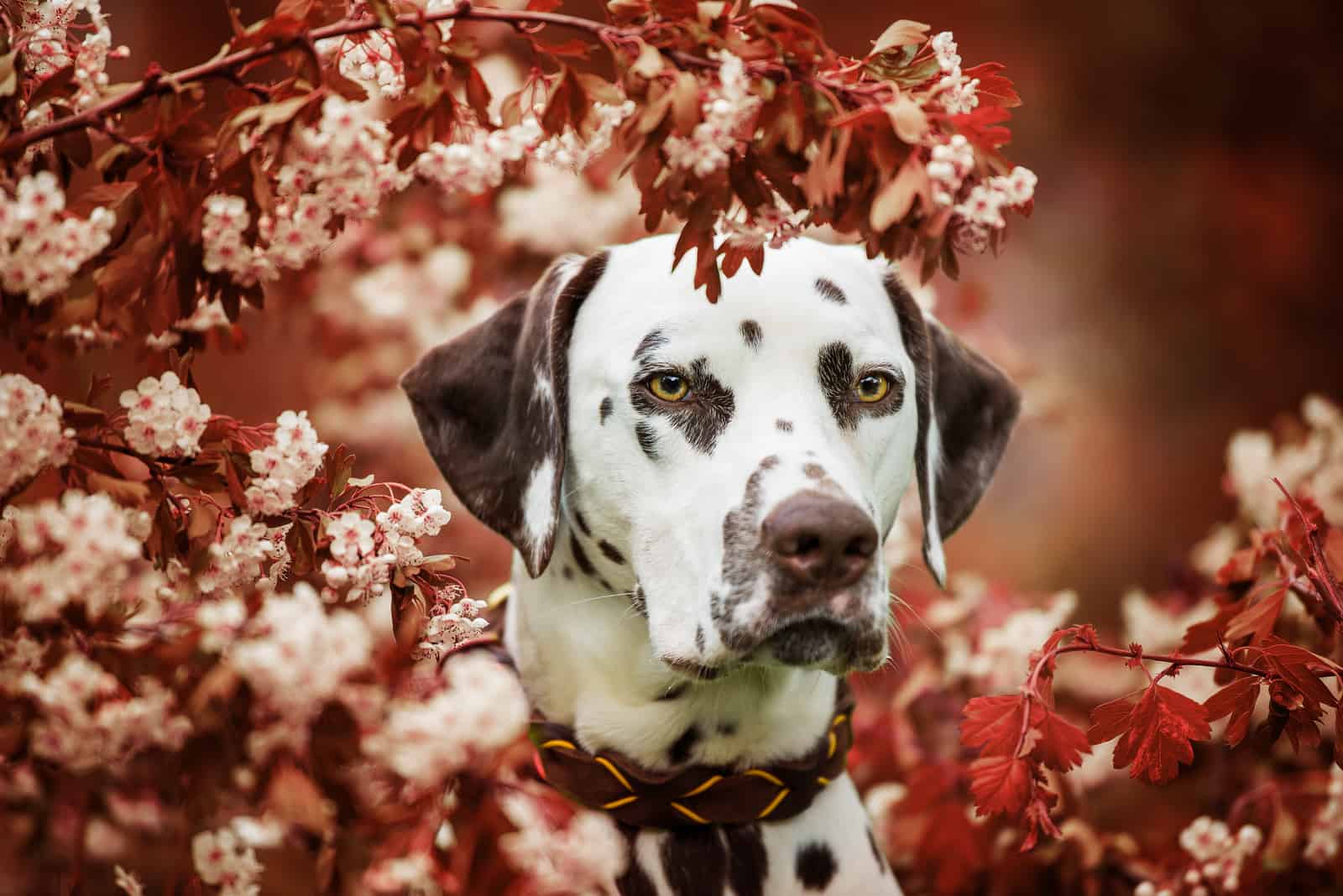
Out of all the recognized Dalmatian colors we’ve named, not all are equally widespread. In fact, the only color that can be considered common is white with black spots.
There are many reasons why other colors are so rare, but the main one is actually quite simple. As white and black Dalmatians are the reason why this is such a popular breed, breeders have dedicated most of their time to breeding dogs in this color.
Also, most other color combinations and patterns are the result of recessive genes that require both parents to be the carriers in order for the color to express itself.
Are Liver Dalmatians Rare?
While white and liver Dalmatians are less common than their cousins with black spots, they aren’t considered rare. They won’t cost more than white and black Dalmatians, but they might attract a bit more attention because they aren’t a usual sight.
In fact, white, liver, and tan Dalmatians can probably be considered the rarest of all the Dalmatian colors – although all non-standard colors are nearly equally rare.
Unacceptable Dalmatian Colors
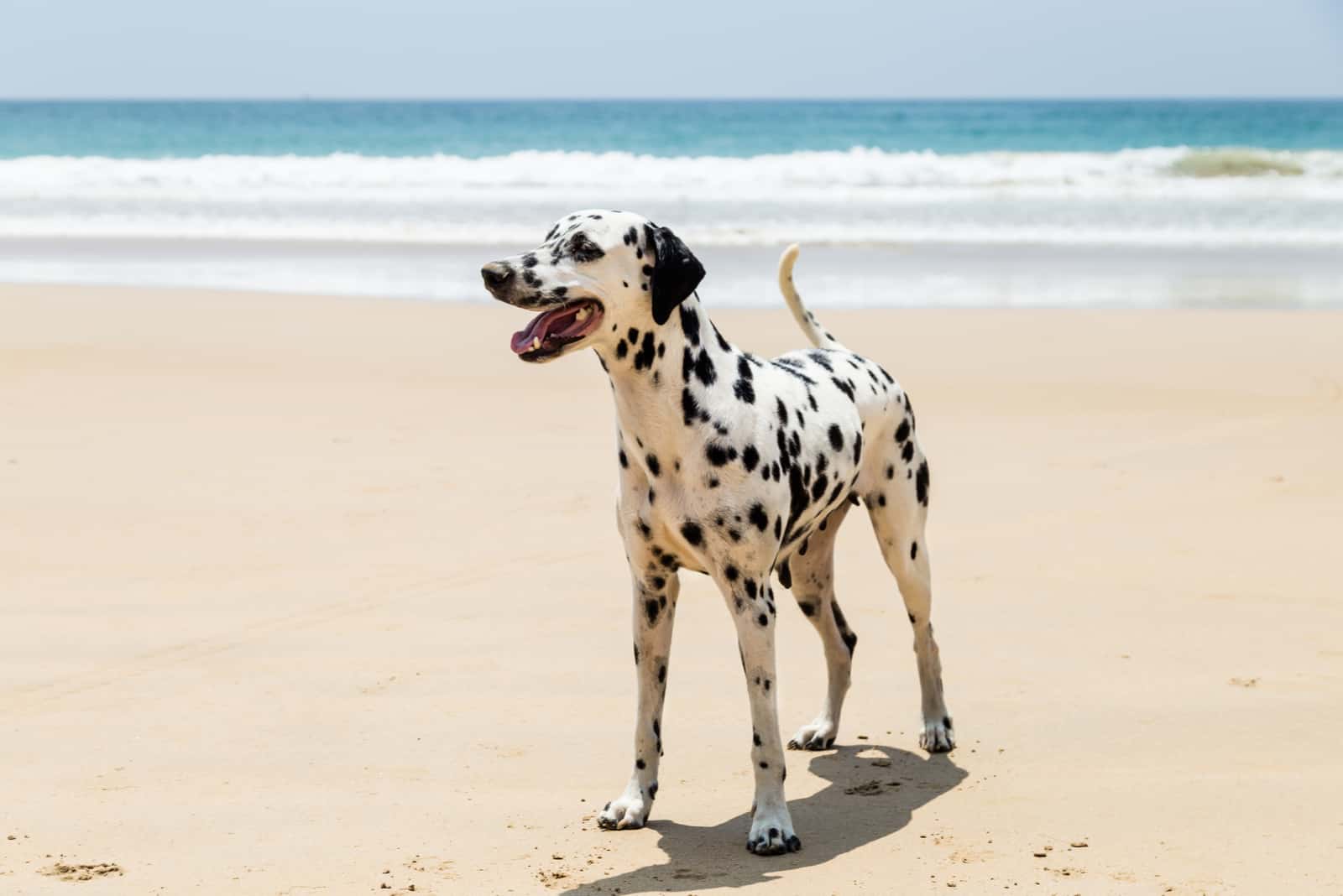
While all the colors we’ve listed before are considered acceptable by the AKC, Dalmatians can come in two more colors that are considered faulty by all major kennel clubs.
The usual reason why many of these colors are banned is that they are connected with the increased risk of certain health issues. This is why they are frowned upon by both the judges at the shows and the reputable breeders.
Here are two unacceptable Dalmatian colors that the breed can come in:
Albino Dalmatian
Albino isn’t a true color. Rather, it’s the result of a fairly rare condition called albinism. Dogs with this condition don’t have any pigmentation in their bodies. This is why they appear to be pure white.
Albino Dalmatians are pure white, with a slight pinkish tint to their coat. Some may have a few faded spots that cannot be considered any of the colors that we’ve mentioned above.
These dogs also have very light eye colors that can sometimes have a red shade to them.
Albinism is connected with several health problems, such as deafness, blindness, heart diseases, and bone problems.
Parti Dalmatians
Parti – or partially colored – Dalmatians have large markings that look more like patches than spots. They usually come with black or liver markings.
Unlike with regular spotted Dalmatians, the markings of the parti Dalmatians are usually present at birth, which is a quick way to differentiate them from ‘standard’ Dalmatians.
Some pieces of research show that parti Dalmatians have an increased chance of developing some health problems, although this is still lacking solid proof.
Are There Rainbow Dalmatians?
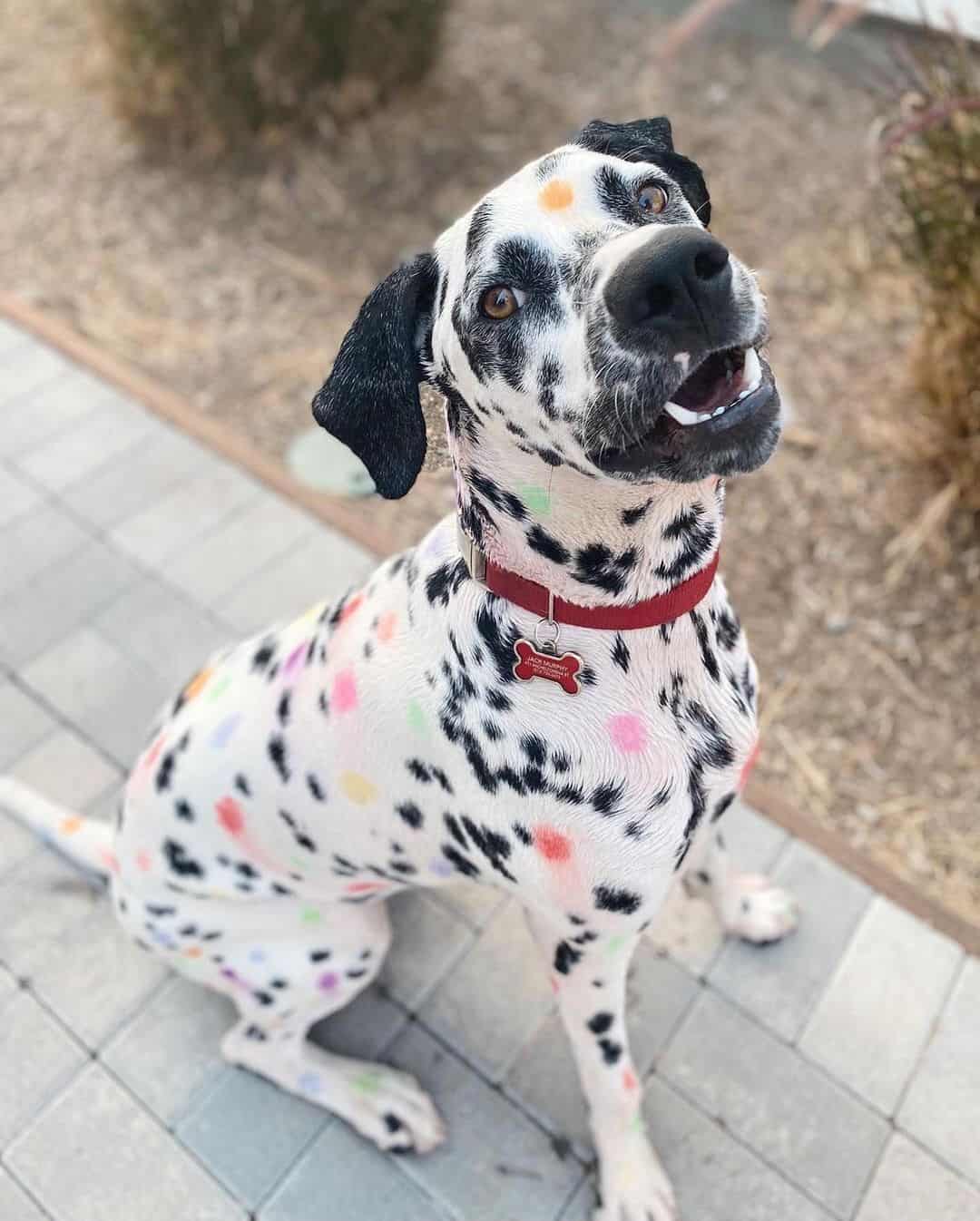
Photo from: @lejournalmagazine
In recent years, photos of rainbow Dalmatians have flooded the internet. This went so far that some people started to believe that these Dalmatians were real.
While this might seem obvious to some, rainbow Dalmatians don’t really exist. They are just Dalmatians that someone painted with several colors, so they may appear rainbow-colored.
Dalmatians, just like any other dog breed, cannot produce pigment in rainbow colors. This is because there are only two types of pigment (eumelanin and phaeomelanin) present in canines, and these are responsible for black and red shades.
Even if there is a dilution gene present, it won’t create a pup in unnatural, rainbow colors.
If you truly want a rainbow Dalmatian, don’t try to paint on him! You might be using products with harsh chemicals that might harm your pup. Take him to a professional groomer instead, so they can color him with organic products.
Dalmatian Color Genetics
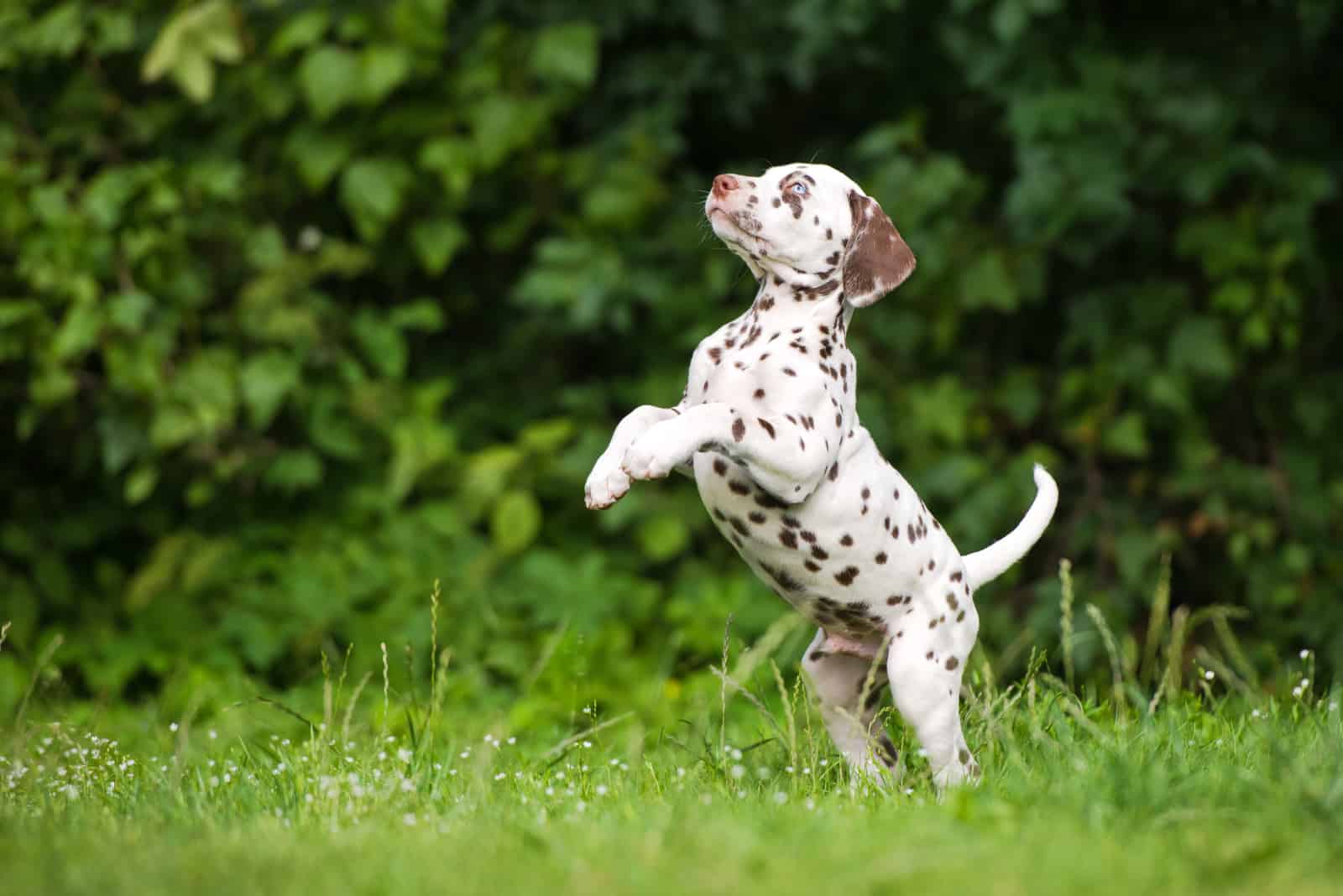
As we’ve mentioned, Dalmatian colors are controlled by genetics – primarily by the B locus, E locus, and D locus. A Dalmatian puppy will inherit one gene from both of his parents, and the final result will determine his appearance.
The E locus is dominant, and it is responsible for the production of eumelanin (black pigment). This is the most dominant of all pigments in canines, and it causes a black coat color.
The B locus alters the production of eumelanin, turning it into brown. While dominant to many other genes, it is recessive compared to the E locus, which is why, in Dalmatians, both parents need to carry it in order for a dog to be brown.
The D locus is the one responsible for a lighter coat color in Dalmatians, such as the yellow or orange one. This is the least dominant gene of all three, which is why it is the rarest.
Dalmatian Eye Colors
The kennel club’s breed standard determines not only the Dalmatian coat colors, but also their eye and nose colors.
When it comes to their eyes, they can change the dog’s appearance entirely.
Most Dalmatians have brown to black eyes, but some other colors are possible. This is what the kennel clubs have to say about them:
[table id=155 /]
Do Dalmatians Have Blue Eyes?
Most Dalmatians have brown or amber eyes, depending on their spotting. However, there are also blue-eyed Dalmatians.
Keep in mind that the gene that causes blue eyes in Dalmatians is connected with deafness. While not all blue-eyed Dals will be deaf, this can be a warning sign, so make sure the vet examines your pup for hearing loss.
Dalmatian Nose Colors
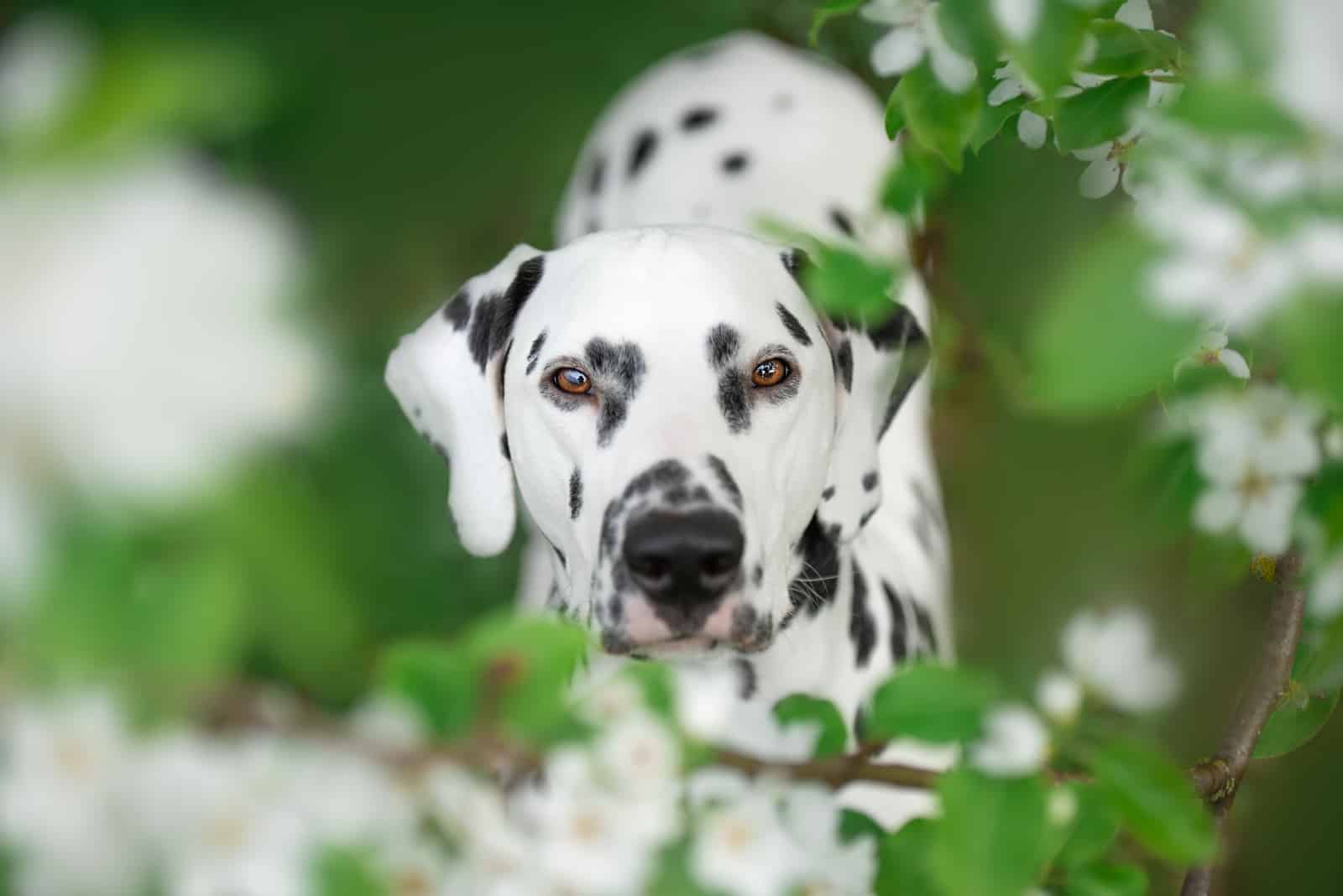
Another feature that can change a Dal’s appearance is his nose color. This is another thing that needs to be according to the breed standard if you want your Dalmatian to be able to participate in the show ring.
Most kennel clubs agree that the only acceptable nose colors for Dalmatians are black or brown, with the brown nose being present in white and liver Dalmatians.
The only exception is the FCI, which states that the nose color should be in accordance with the Dalmatian coat color.
Do Dalmatian Spots Get Darker?
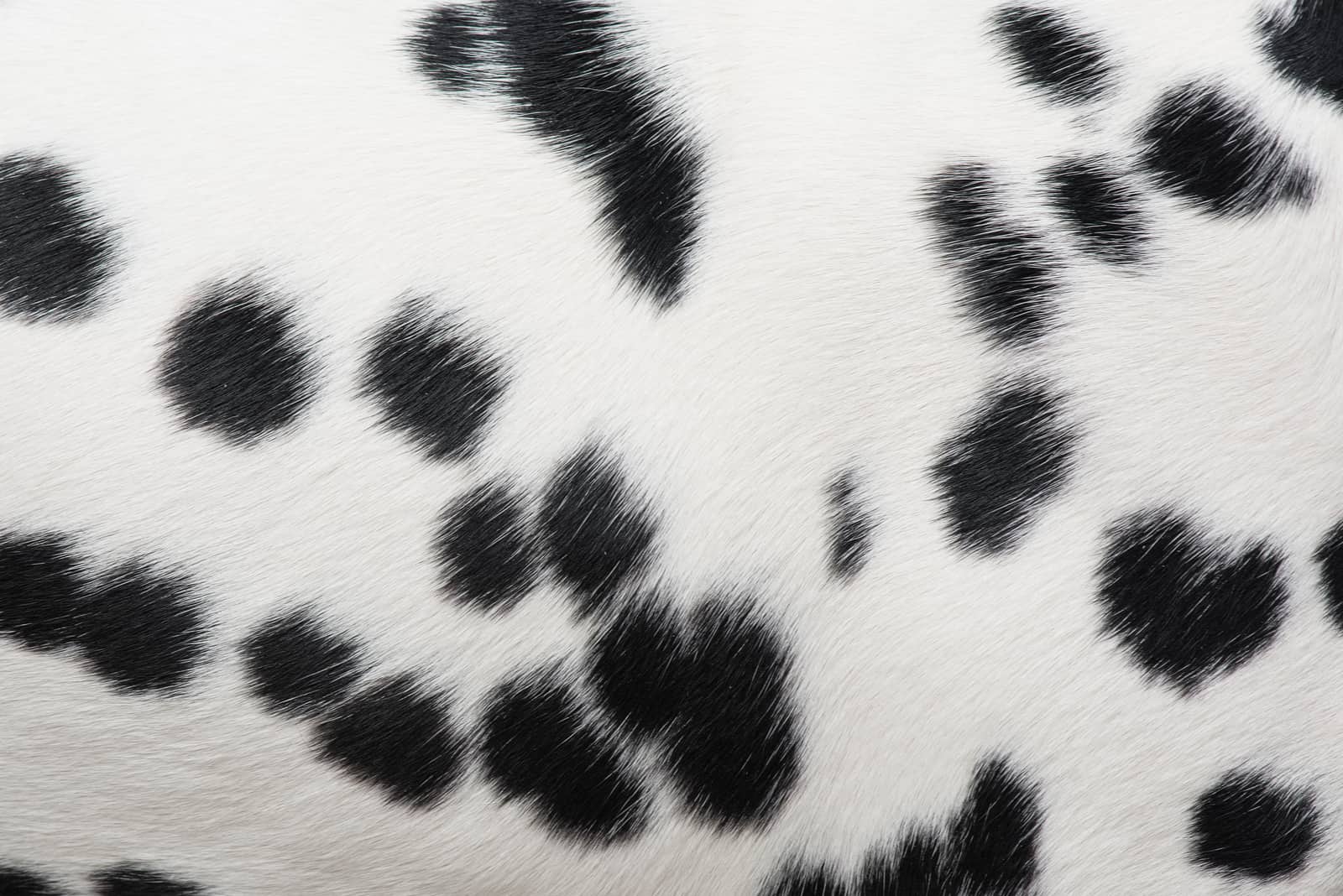
Dalmatian puppies will experience severe color changes as they grow older. They will be born pure white, and their spots will appear after a few weeks.
While your Dalmatian usually won’t experience any other coat color change during adulthood, sometimes, this can happen. For example, their markings might become darker or lighter due to some environmental factors or aging.
Things such as a bad diet might also make your Dalmatian’s coat appear duller and lighter because your pooch won’t get enough nutrients needed for healthy fur. This is why it’s important to only give him high-quality dog food throughout his life.
Keep in mind that all these changes are subtle and entirely natural. For example, your lemon Dalmatian won’t become brown just because of changed living conditions. This isn’t how genetics works, and you won’t end up with an entirely different dog over time.
How Do You Look After a Dalmatian Puppy?
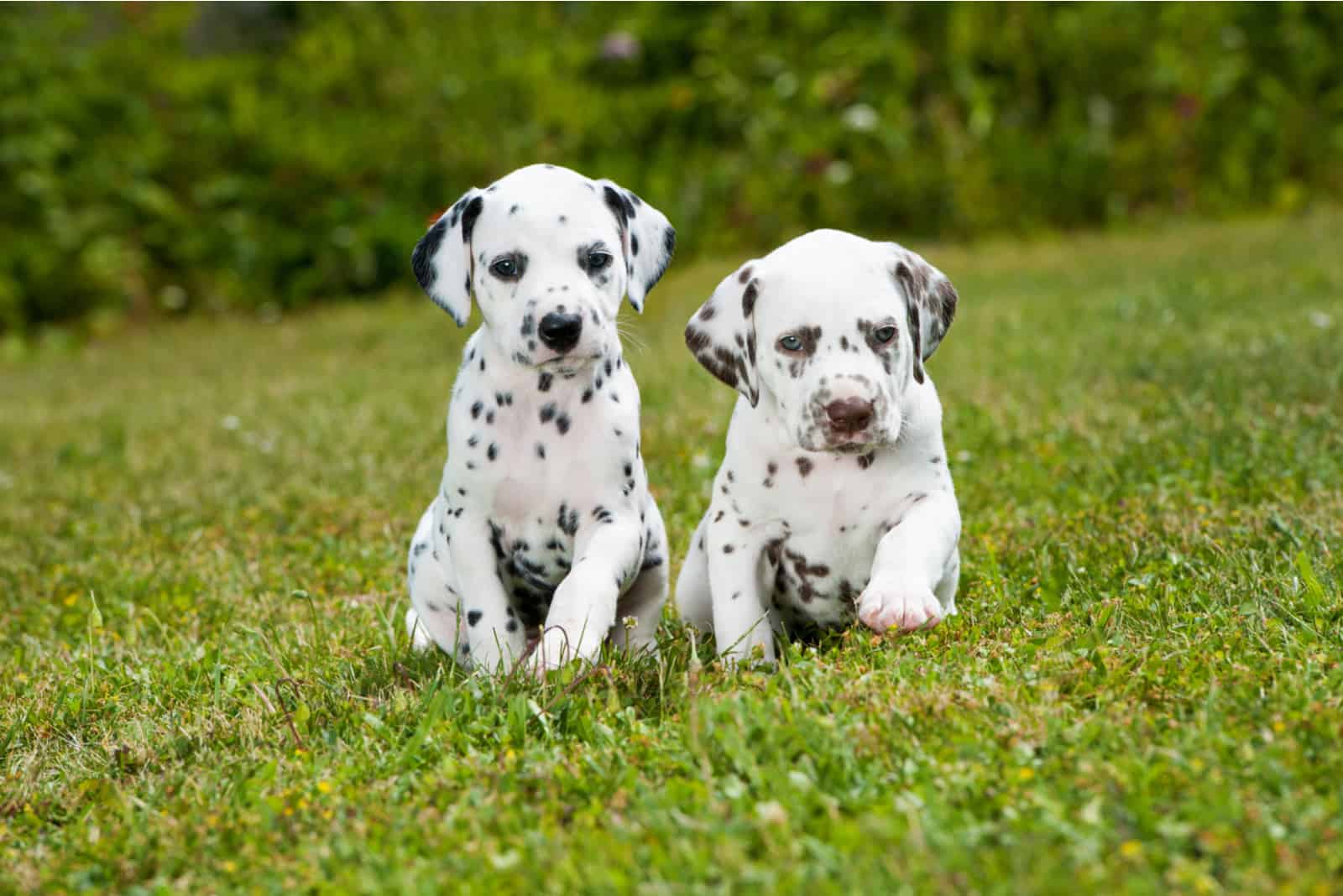
A Dalmatian might not be the best choice for a novice dog owner, but it isn’t too difficult to take care of one if you have the determination to do so.
The first thing you need to do is choose a healthy Dalmatian puppy from a reputable breeder. Dalmatians tend to be very shy, so this is one of those occasions where you should pick a more outgoing puppy from the litter.
If possible, try to check that the Dal puppy isn’t deaf. While deaf dogs can live perfectly fine, it could lead to some health issues later on.
Dalmatians are prone to bladder and kidney stones, so always give him the best dog food possible. Try to pick brands that offer low-protein food.
These are active dogs with plenty of energy, so you’ll need to give them plenty of exercise. Also, make sure you make your back yard dog-proof, so they don’t escape. These intelligent dogs are escape artists, and they’ll do all they can to run away, especially if you have an intact male.
Socialization is very important for Dalmatians as they might not like strangers too much. Take them to dog parks as soon as they receive their vaccinations so they can meet other dogs and play.
Good socialization is the key to getting your dog used to new situations and environments.
While Dalmatians mostly have a short coat, they still experience a large amount of shedding. As their hairs are white, they’ll be visible everywhere! Frequent grooming is the key to keeping loose hairs at bay – especially if they are rare, long-coated Dalmatians.
Dalmatians are stubborn, which can make training a bit challenging. You need to be firm and persistent to make them listen to you.
Avoid punishments as these are sensitive dogs that can shut down if you yell at them. Use positive reinforcement instead. Try giving him healthy treats such as paprika, fish sticks, or brussels sprout.
Will a Dalmatian Color Affect His Personality or Health?
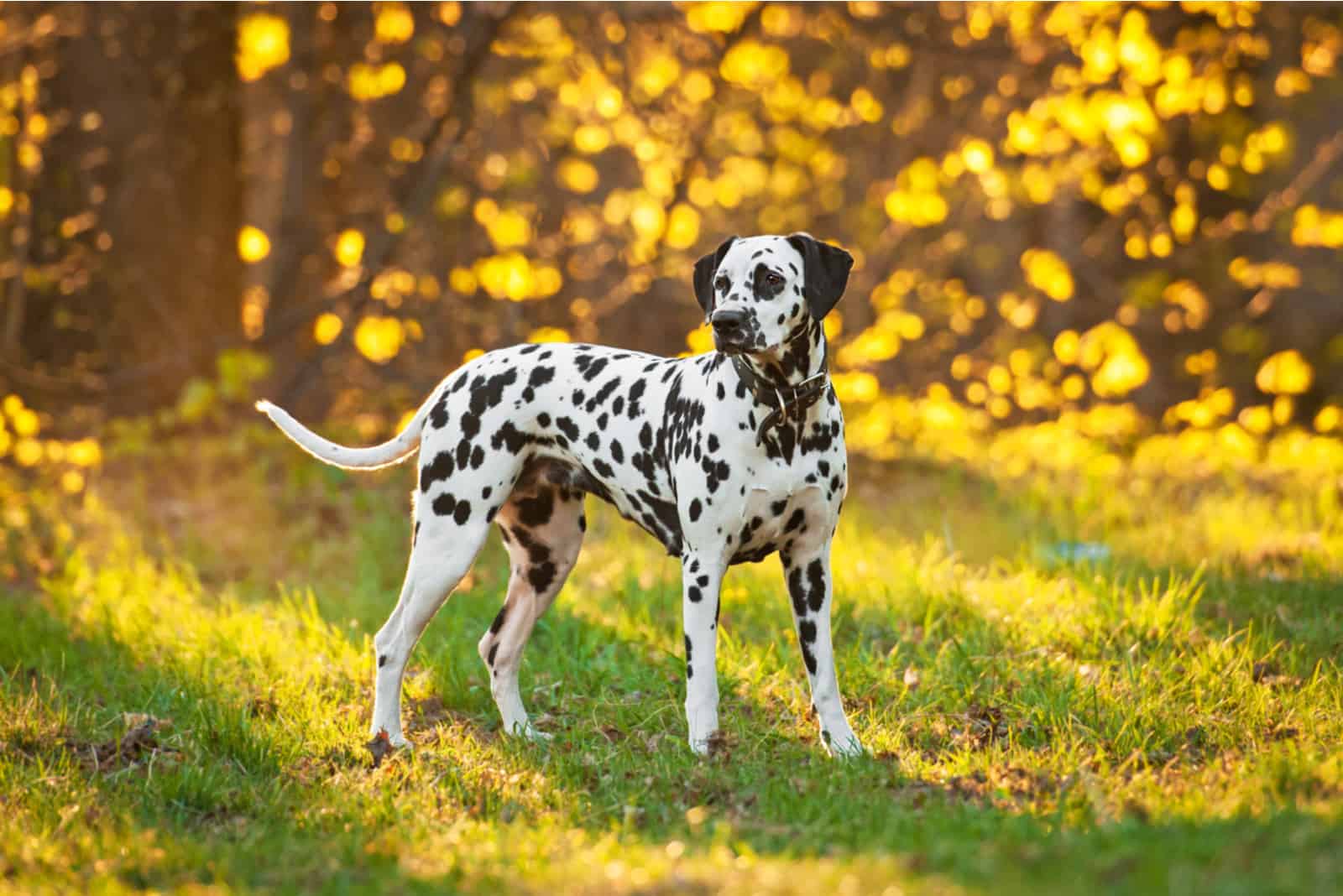
Despite some rumors, a dog’s coat color won’t have any effect on his personality and behavior. All Dalmatians are equally good pets that still require some obedience training and lots of socialization. There is no proof that colors can make a dog more friendly or more aggressive.
However, Dalmatian colors can have some effect on the pup’s health.
All Dalmatians are prone to hearing loss or even complete deafness. This is because the gene responsible for the spotted pattern can cause hearing problems. In fact, Dalmatians are among dog breeds that are prone to this problem the most.
Some Dalmatian colors have it even worse, especially the albino Dalmatian. They are at risk of several health problems. Next to deafness, these include:
• Blindness – Many Dalmatians have eye deformities. As the pigment is removed from their eyes and not just their skin and coat, these dogs usually have bad eyesight or are even entirely blind.
• Skin Sensitivity – Albino dogs lack melanin, which is the main protection from harmful UV rays. This makes them prone to sunburns and skin allergies.
• Skin Cancer – Unfortunately, this skin sensitivity can also lead to skin cancer, especially if your dog gets exposed to too much sunlight.
How Do You Tell if a Dalmatian Is Purebred?
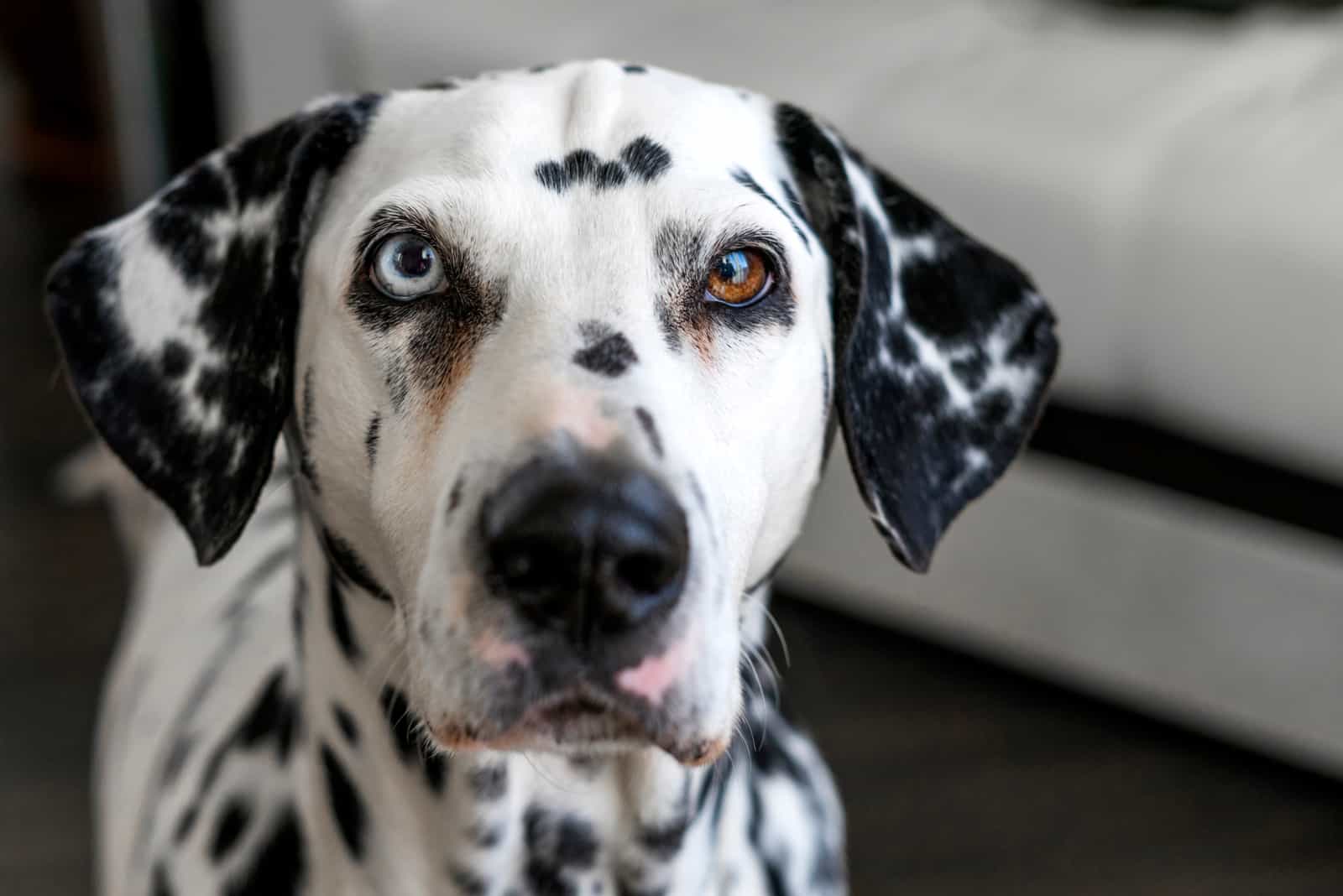
There are a few ways to tell if your Dalmatian puppy is purebred. While you might think that making sure your Dal is according to the breed standard is the most reliable way, the truth is that the appearance can lie.
Purebred dogs make equally good pets as mutts. However, we understand that some people want to be sure they’ve got the dog they paid for.
Other than examining Dalmatian colors and patterns, we’ll give you a few ways you can make sure your puppy is purebred.
The best cue would be to ask for purebred documents or papers. A dog with papers has been registered with a particular kennel club. If you live in the U.S., this should be the AKC.
All Dalmatians with papers are the offspring of purebred dogs that have been registered before. This makes further registration much easier. Sure, you’ll have to apply for registration on your own, but papers make this much easier.
Some dog breeders prefer to register their litters, in which case they’ll need to transfer the ownership to you.
Another good way to ensure that your Dal is purebred is to ask for a pedigree. A pedigree is proof of the dog’s bloodline, dating back at least four generations. Reputable breeders usually have a pedigree by hand for all of their dogs, especially if they’ve been doing this for years.
Health papers are another great thing to have. They will prove that your Dalmatian puppy belongs to a healthy bloodline, meaning they are well-bred.
Sure, appearance and Dalmatian colors are important, but some mutts might look almost exactly the same as purebred dogs. The only way you can be entirely certain that your Dalmatian is purebred is to request the necessary paperwork.
Do Dalmatian Colors Matter?
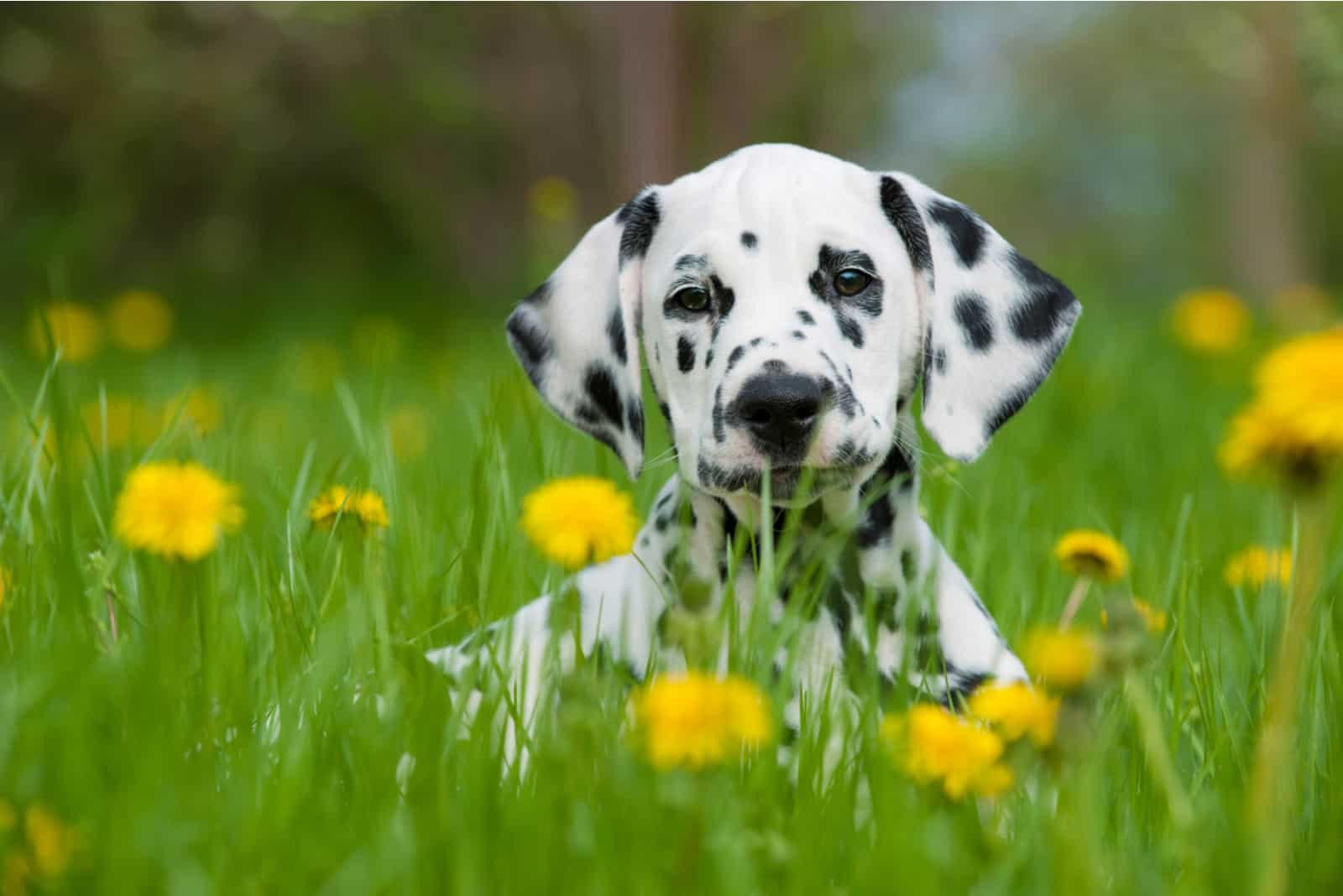
In the end, you might wonder if colors really make a difference. Chances are, you already suspect what the answer is.
No matter the coat color, all Dalmatians make great pets if you have the patience that it takes to properly socialize and train them. These spotted pups were bred to be guard dogs and family pets, and their fur color doesn’t change any of this.
However, the coat color might affect the dog’s health, which is why you should stick to colors recognized by the kennel clubs.
While albino dogs might be beautiful, we would advise against purposefully buying them as this would be supporting unhealthy breeding. There is a reason why some colors are banned or are considered faulty, and this is usually because they lead to serious genetic defects.
Other than that, feel free to choose your favorite Dalmatian color as all Dals make amazing companion dogs.
Read Next: Dalmatian Growth Chart 101
